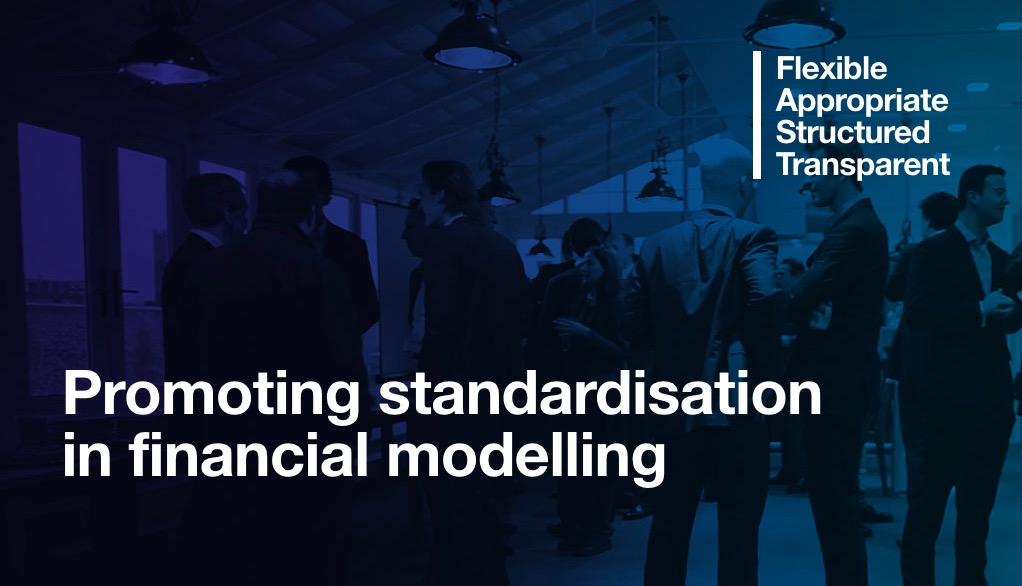I started building financial models in 1998 at my first job out of college at a small private equity firm. I was an economics major at university, strong in math with some accounting classes under my belt, but not versed in using spreadsheets and Excel to understand businesses. As the only analyst or associate at the firm, I didn't have a class of colleagues to learn from, and we didn't have the Excel training that's prevalent at the major investment banks, so I learned from my boss and a lot of trial and error. I found some investment bank models and reviewed their structures, looked at the models we used at the firm, and tried to follow those conventions and create analyses that the firm's partners could understand and use.
Everyone creates models in their own way - different layouts, conventions, structures, formatting, notes and more - and while that generally works for an individual for one-time analyses, over time it can create issues for anyone trying to use models over a long period of time, especially with multiple people. It can be hard enough to figure out what you've done in the past, looking through unnoted calculations, parsing out the flow and logic that you created to get to an answer, that then using those models with others can prove to be very difficult.
I've seen thousands of excel models forecasting startups, yet still amazed at how different the logic processes and layouts are.
— Taylor Davidson (@tdavidson) January 22, 2016
What's interesting about the FAST Standard
That's why the FAST Standard is interesting. The Standard was created by industry practitioners to provide guidance to spreadsheet-based financial modelers on how to design good models, promotes standardization in financial modeling and setting a set of shared goals for financial models. The Standard isn't focused on Excel or shortcut keys or the tools we use to create models, but about how to think about financial modeling.
The Standard is based on four tenets, as explained by the Standard's overview:
- Flexible: To be effective, the structure and style of models require flexibility for both immediate usage and the long term. They should allow multiple users to run scenarios and sensitivities and to make modifications over an extended period as new information becomes available. This level of flexibility is achieved through maintaining the simplicity of the model, rather than attempting to incorporate complex devices with an option for every eventuality.
- Appropriate: Models must reflect key business assumptions directly and faithfully without being cluttered in unnecessary detail.The modeller must not lose sight of what a model is: a good representation of reality, rather than reality itself. Spurious precision is distracting, verging on dangerous, particularly when it is unbalanced. For example, highly specific tax assumptions may lead to an expectation that all elements of the model are equally certain, creating a false impression if the revenue forecast is essentially guesswork. An excessively detailed base case will drown the more important scenario-based risk analysis and may prevent the practical execution of Monte Carlo analysis.
- Structured: Rigorous consistency in layout and organisation is essential in retaining the model’s logical integrity over time, particularly as a model’s author may change. A consistent approach to structuring workbooks, worksheets, and formulas saves time when building, learning, or maintaining the model.
- Transparent: Effective models are founded upon simple, clear formulas that can be understood by other modellers and non-modellers alike.
How I use the FAST Standard
While I sometimes fail to abide to the standard ...
Actual excel formula used in a model update. (Update coming soon) pic.twitter.com/8syQ2A9pzF
— Taylor Davidson (@tdavidson) April 29, 2016
... it's a set of principles that resonates deeply with me. When I build a financial model I am looking to build structures that thousands of people can understand and use to make real, practical business decisions, even if they are not gifted at Excel. It's not easy: I have changed the fundamental structures behind the Foresight financial models numerous times over the years, always looking to make the core structure and design more powerful, more adaptable, easier to use, more practical, more accessible to a wider range of people and business types.
While the Standard is most valuable to the professional financial modeler, the set of principles are powerful for anyone using Excel to do meaningful businesses analyses, especially shared analyses within teams and companies. Even if you choose to not strictly apply the FAST Standard, the modeling techniques and ethos behind it are still powerful and meaningful. I've been building models for years, and have lived years of my life inside Excel, but I still found learning the Standard - and learning to apply it - powerful for my own work, testing some of my conventions and making some of my fundamental beliefs about models clearer and crisper. Foresight is a sponsoring body of the FAST Standard and I passed my FAST certification in April 2017, and I'm excited to help spread the idea of FAST to more people.
Why does this matter? Making the models clear and easy to use is powerful for everyone using a Foresight model. I have worked extensively to rewrite the core structure to make it easier to use, more transparent, and easier to edit over time (replacing single input assumptions with easier methods to change them over time, for example), and I am always working more of the principles of FAST into all of my models.
Here's to better, easier, faster financial models.

